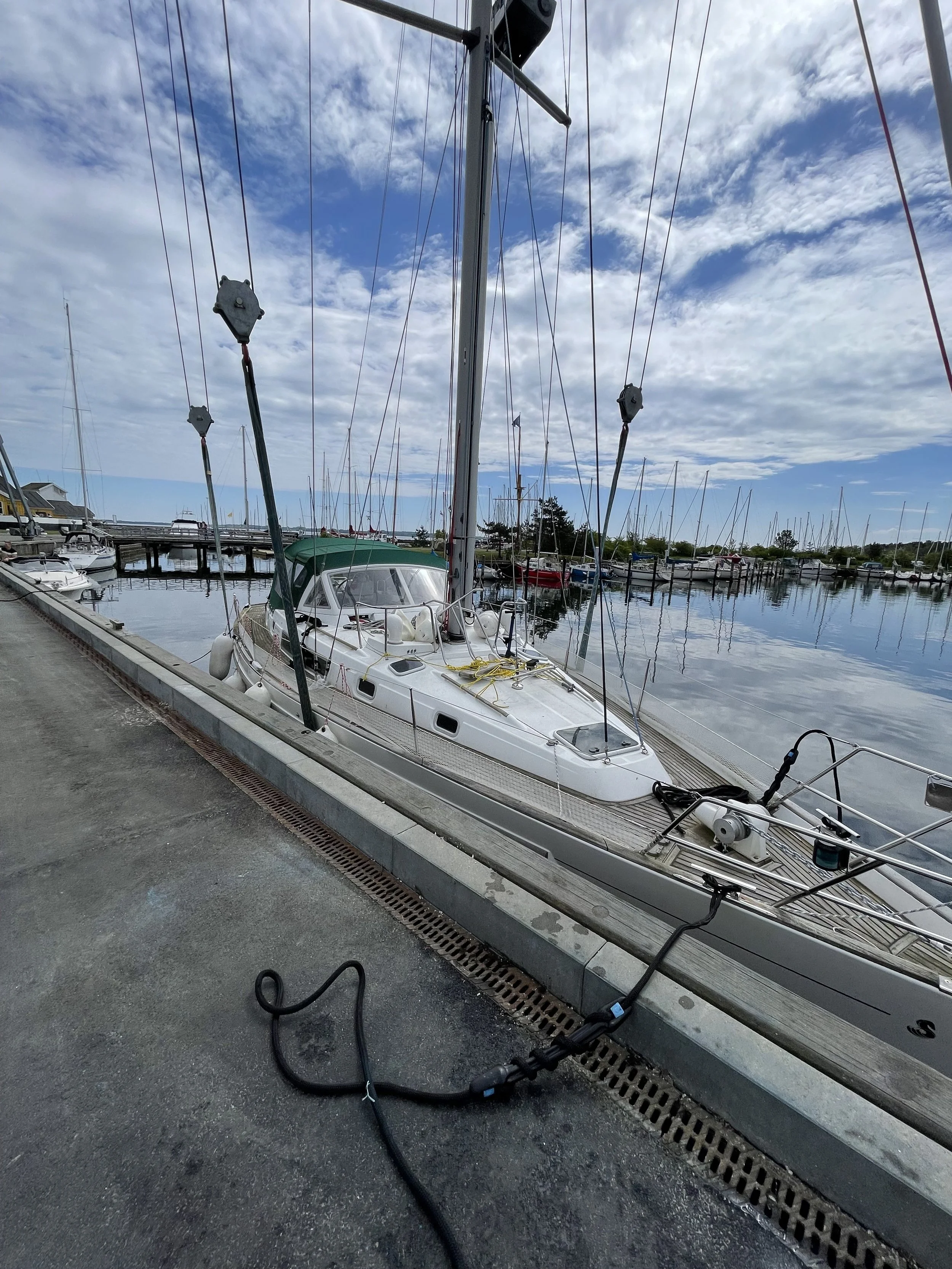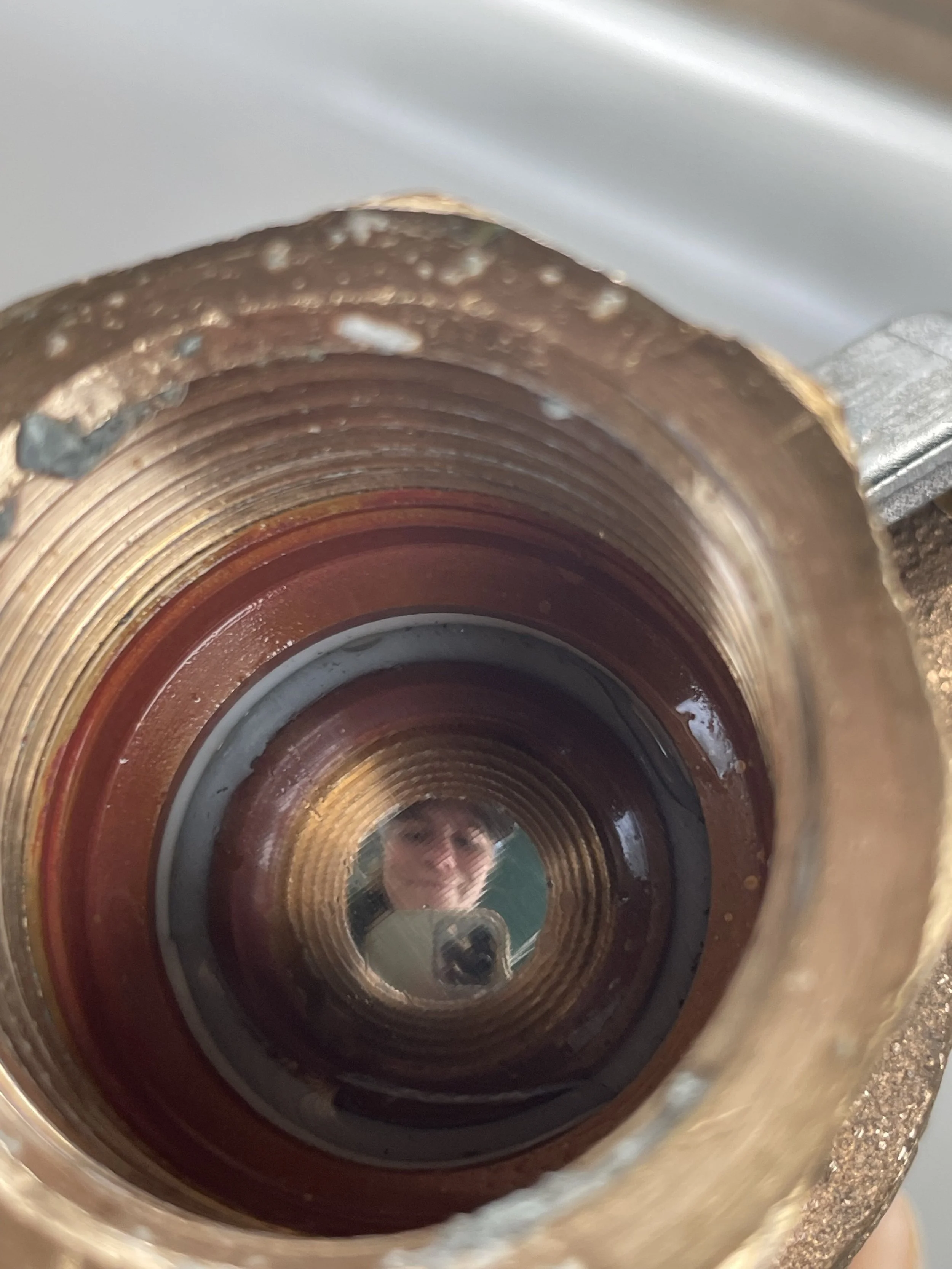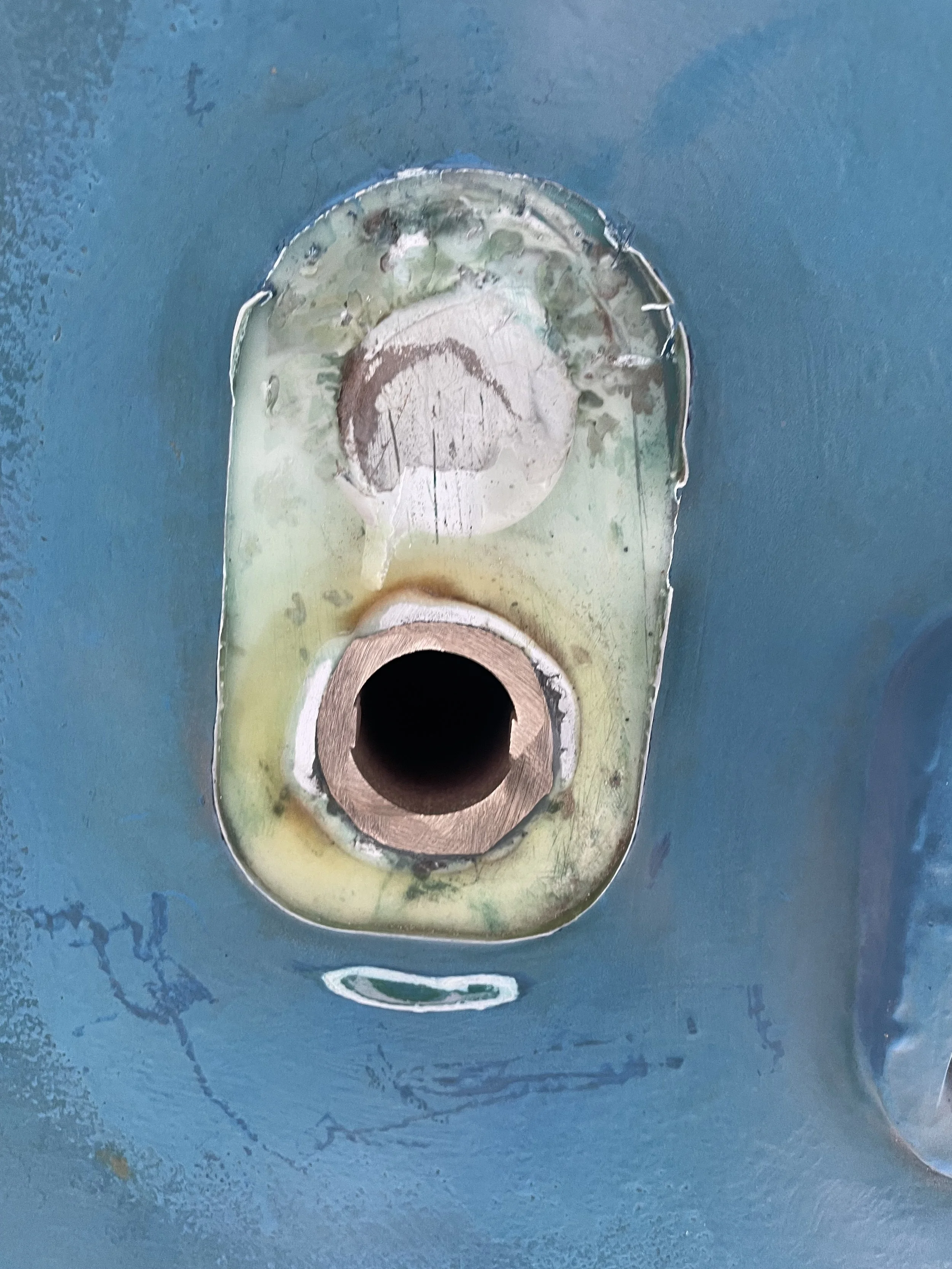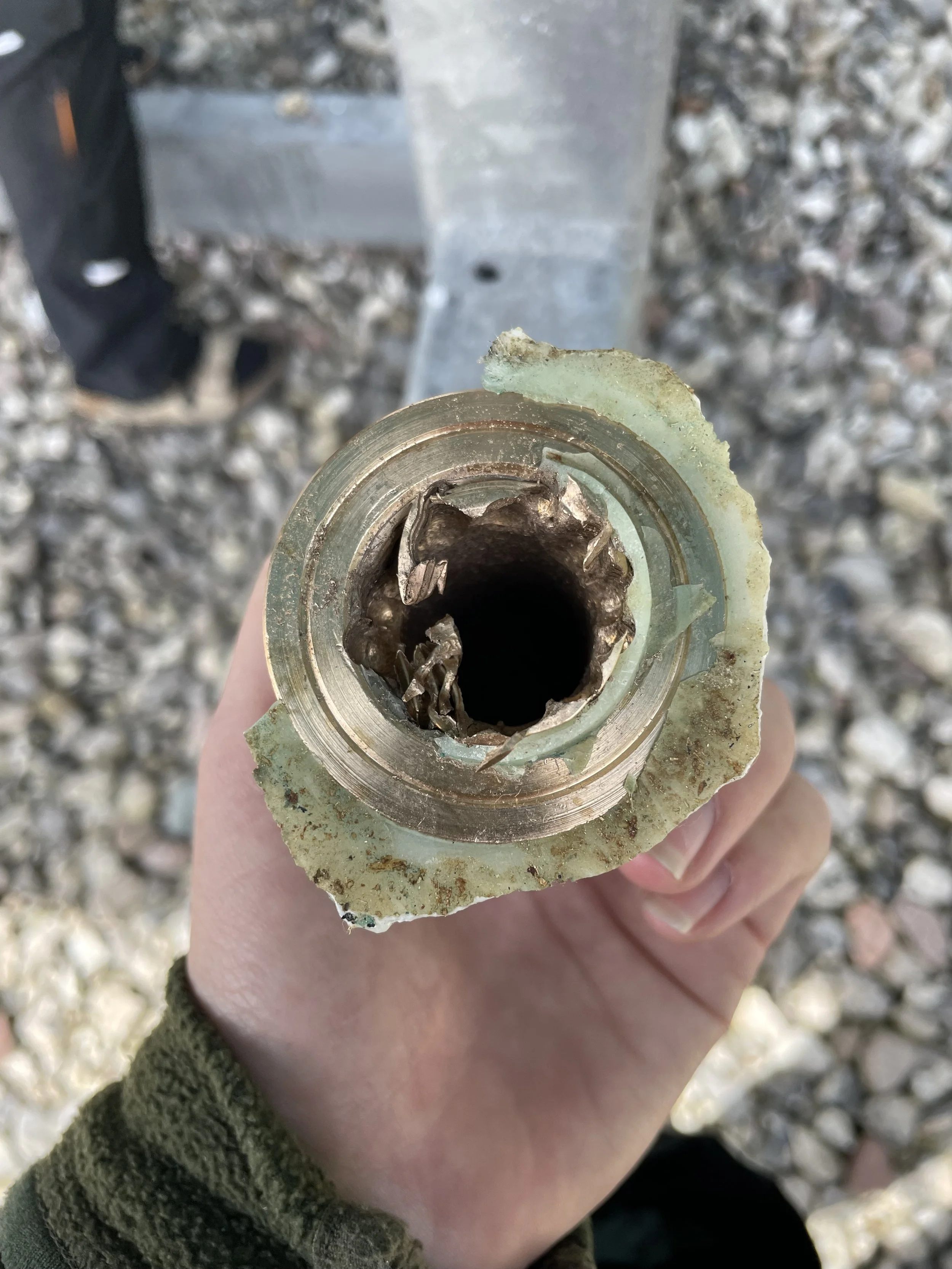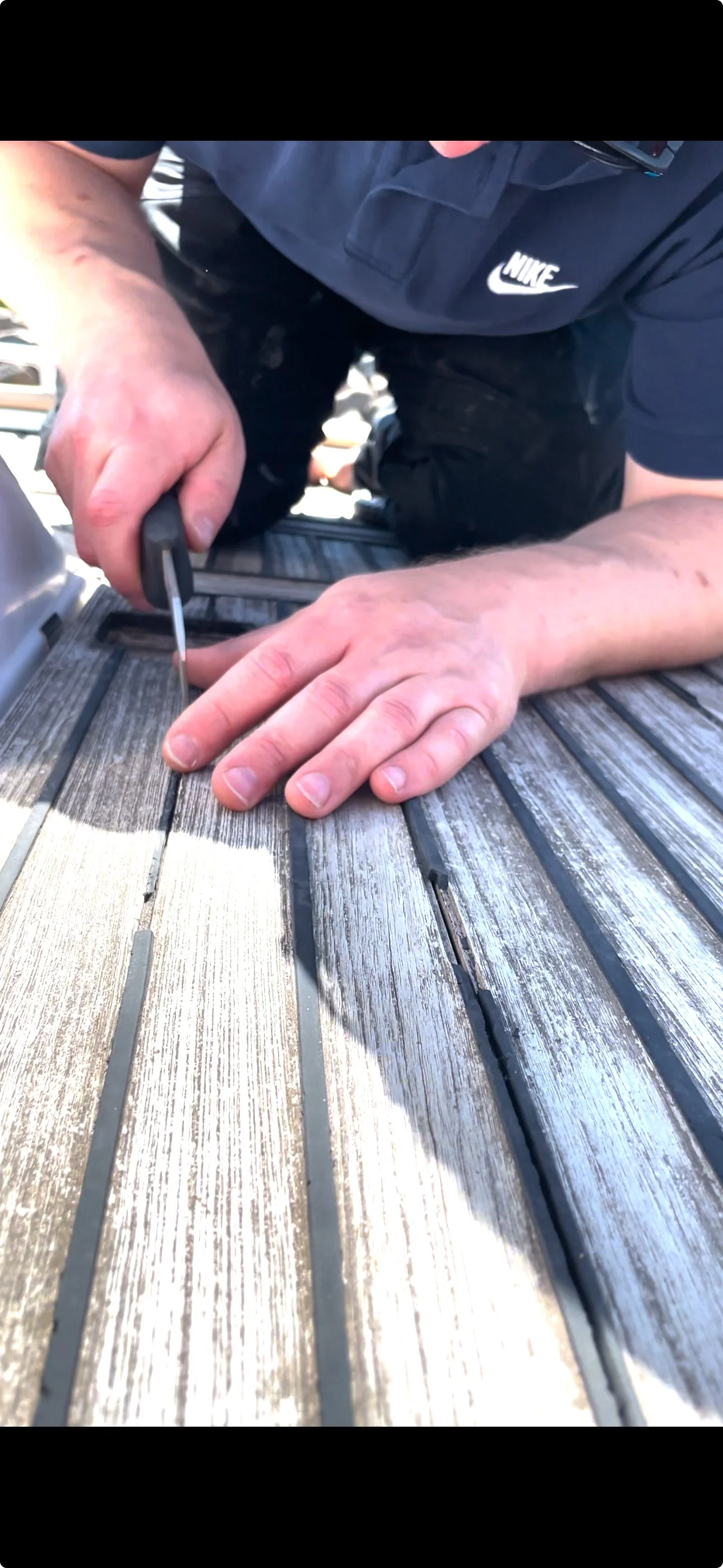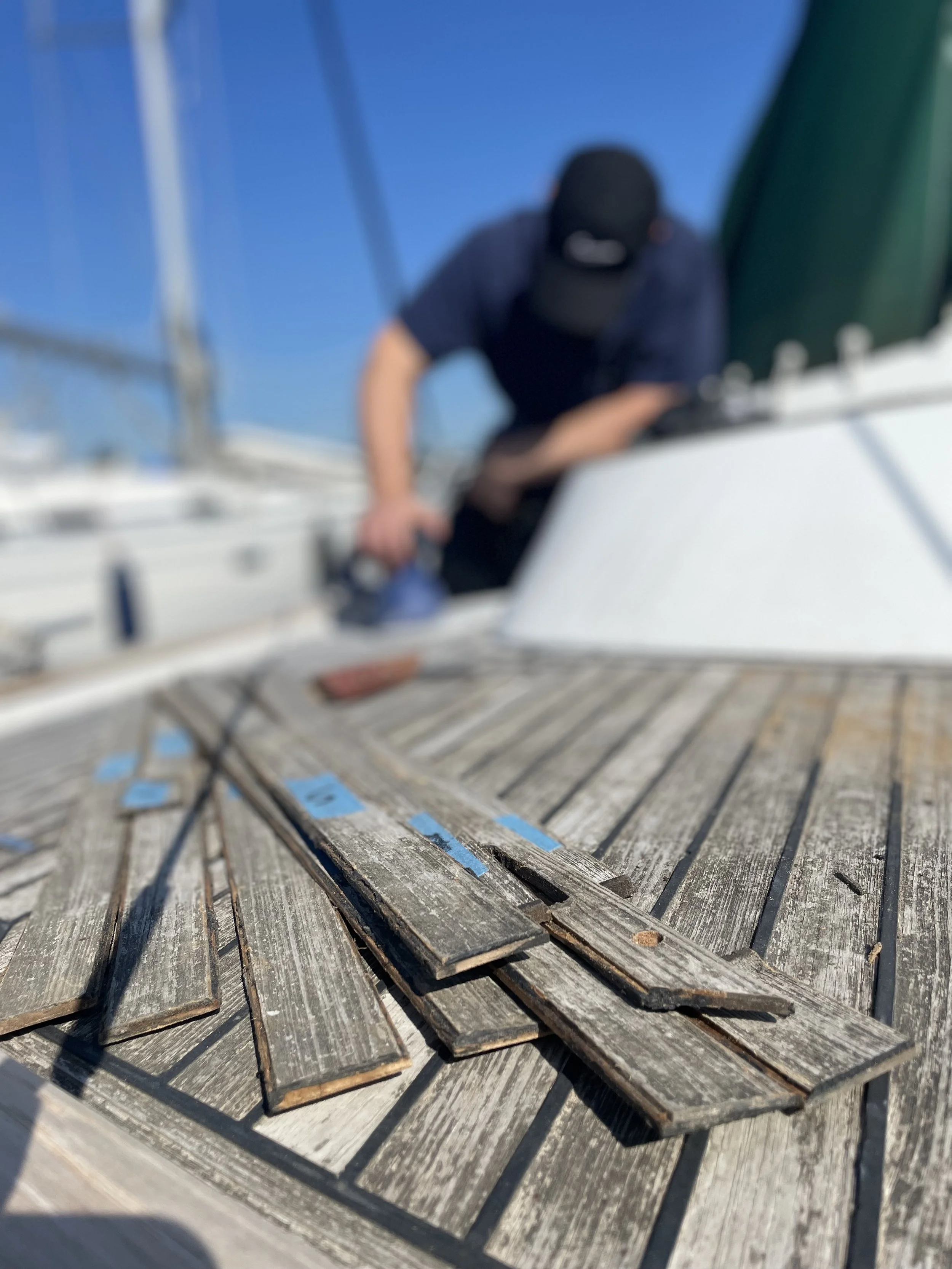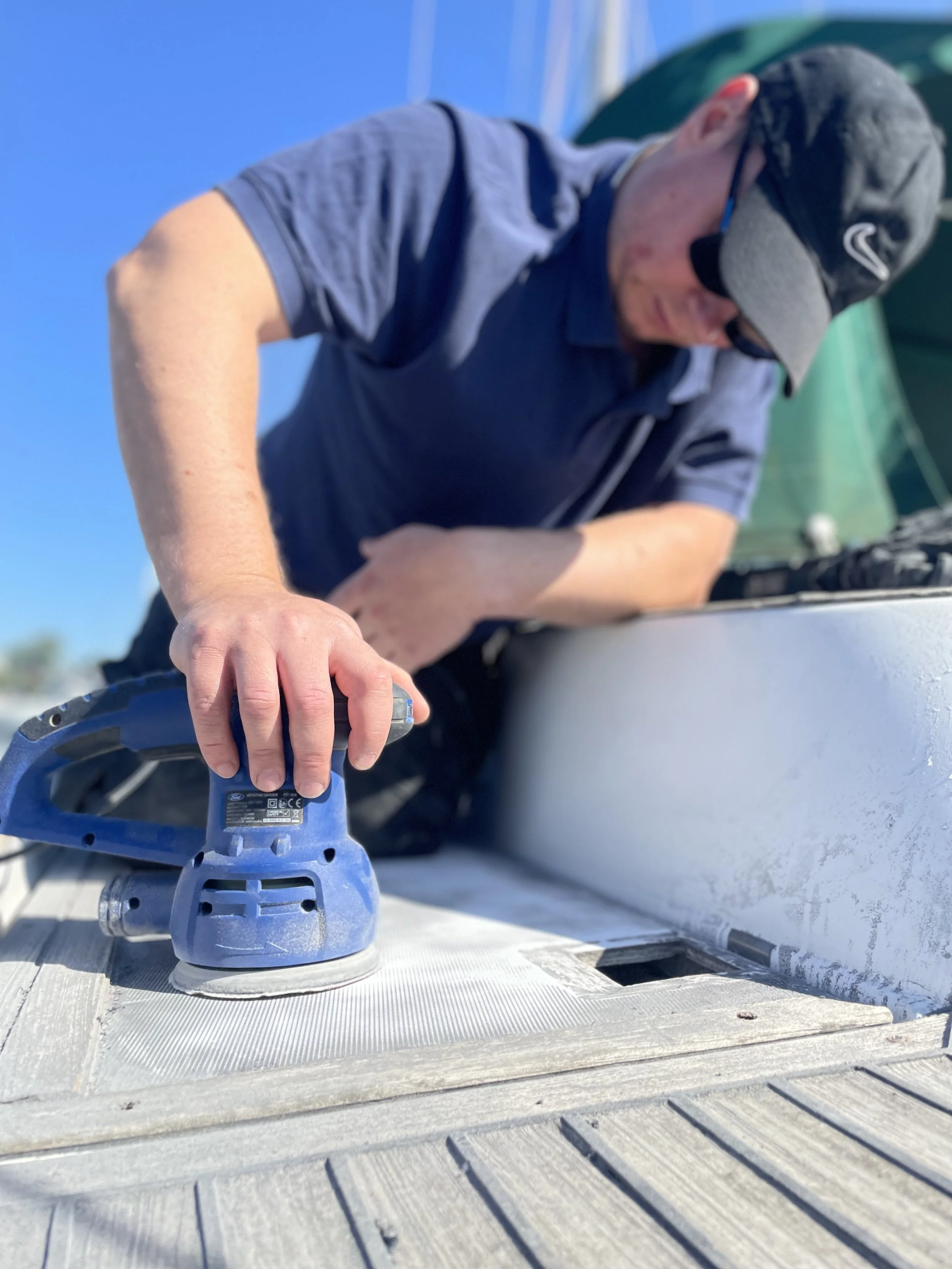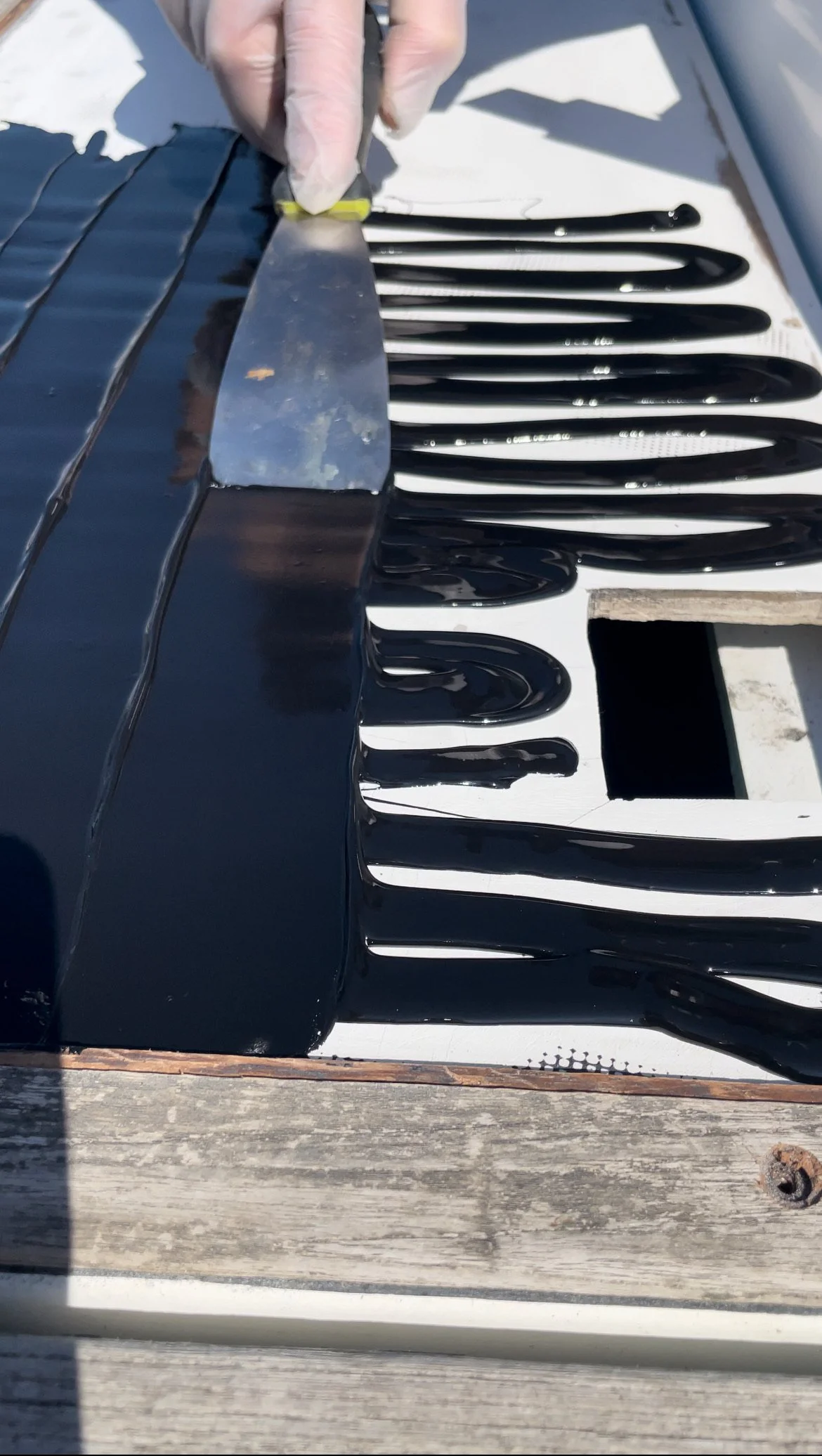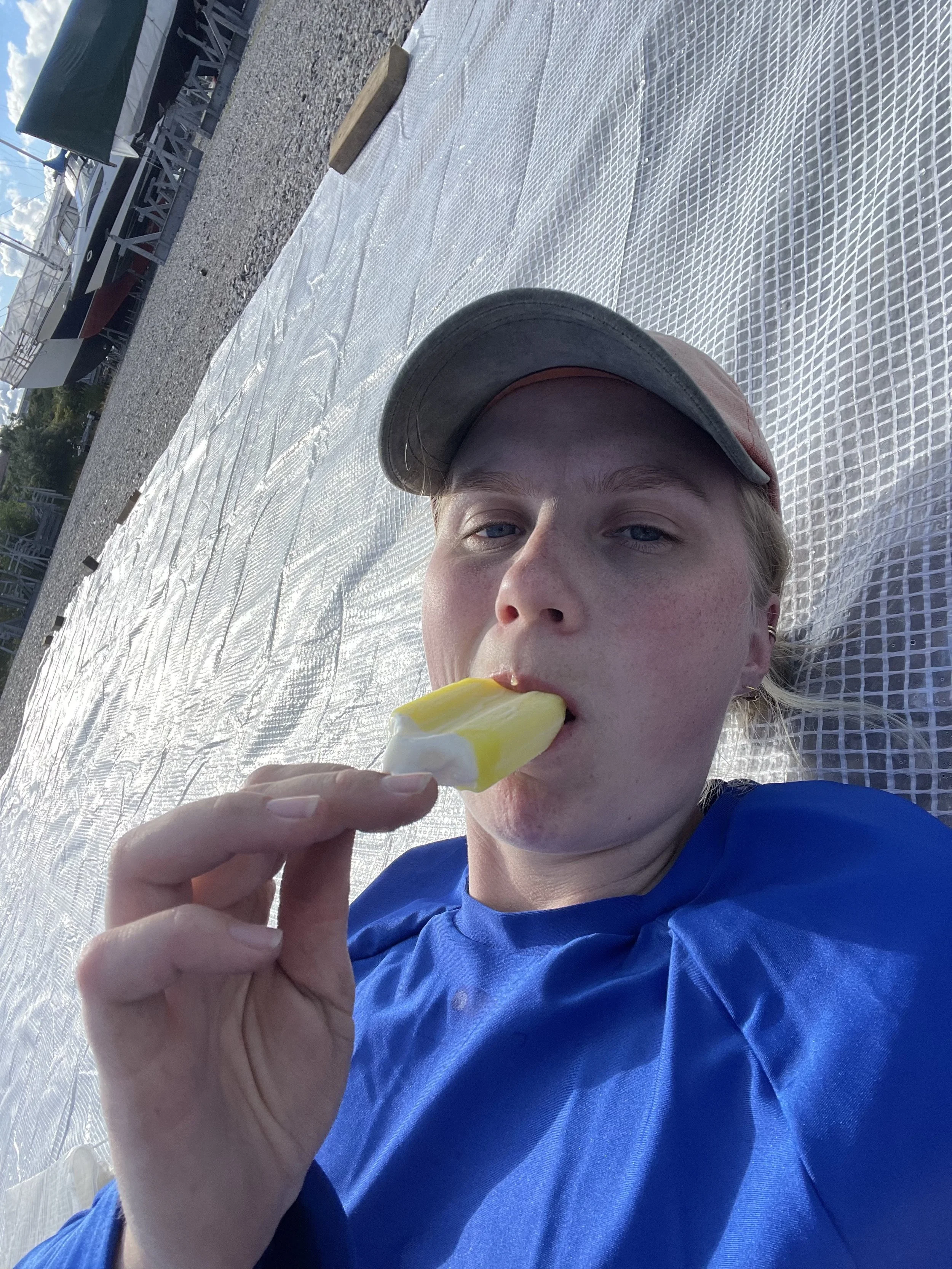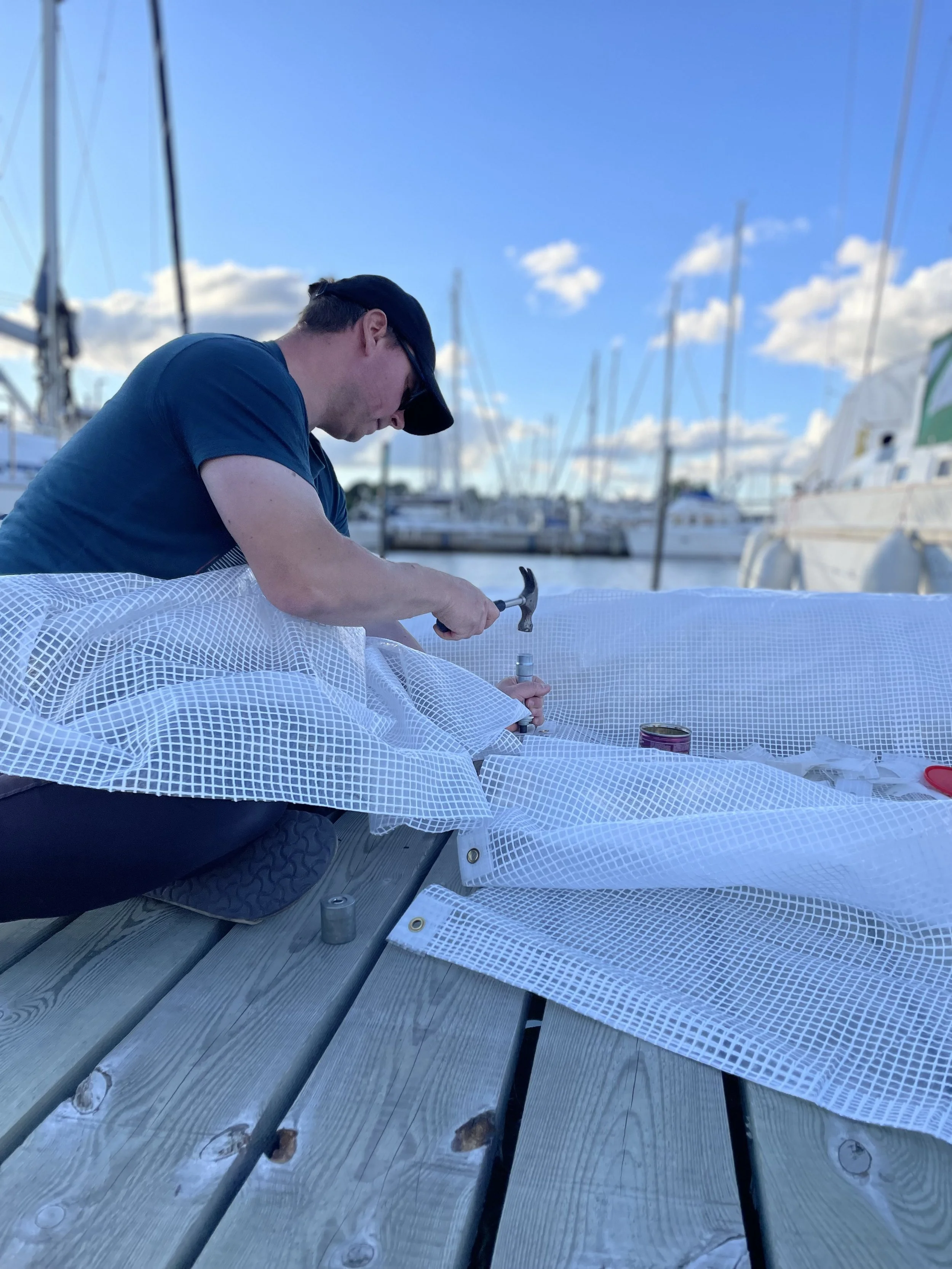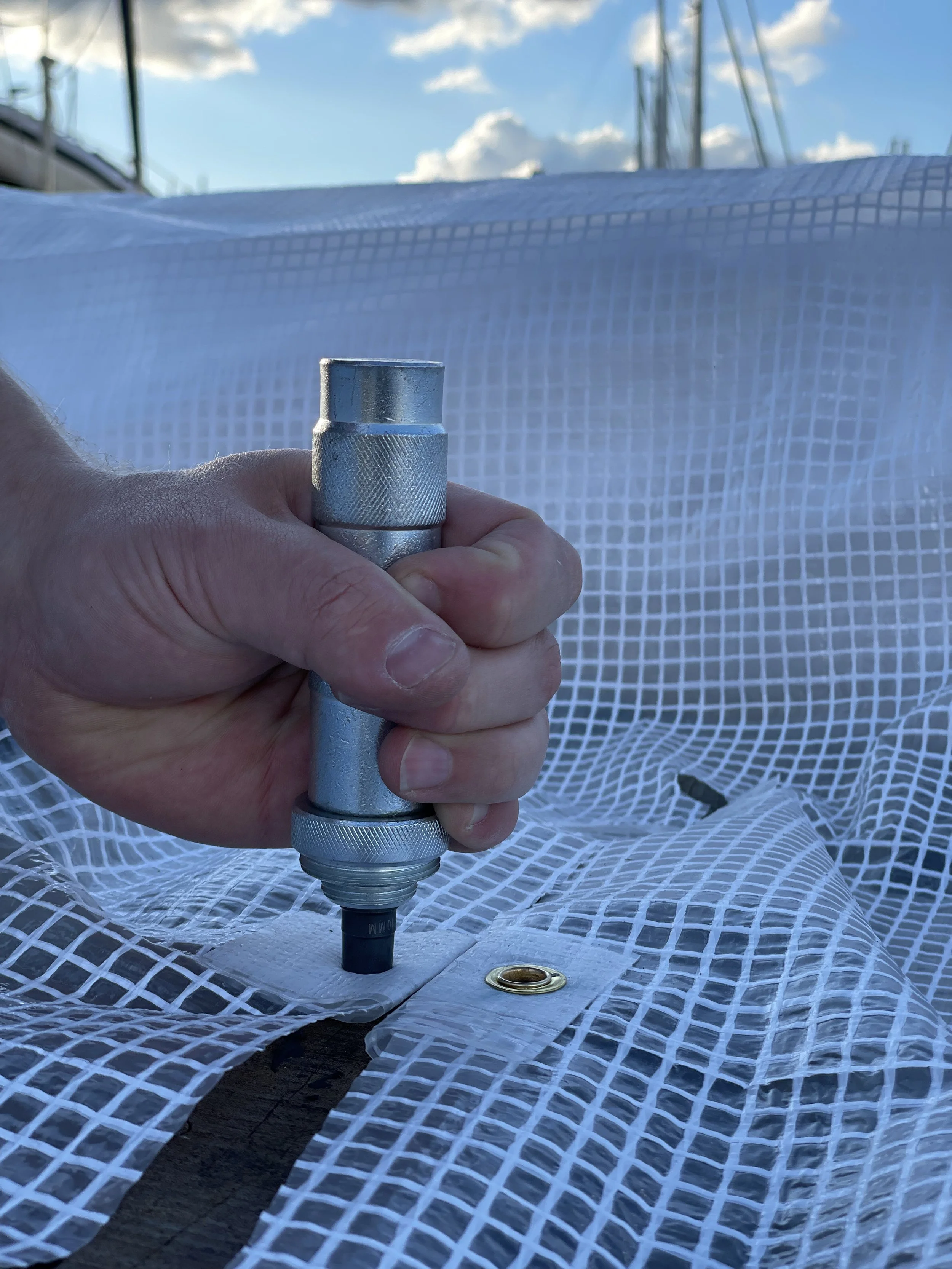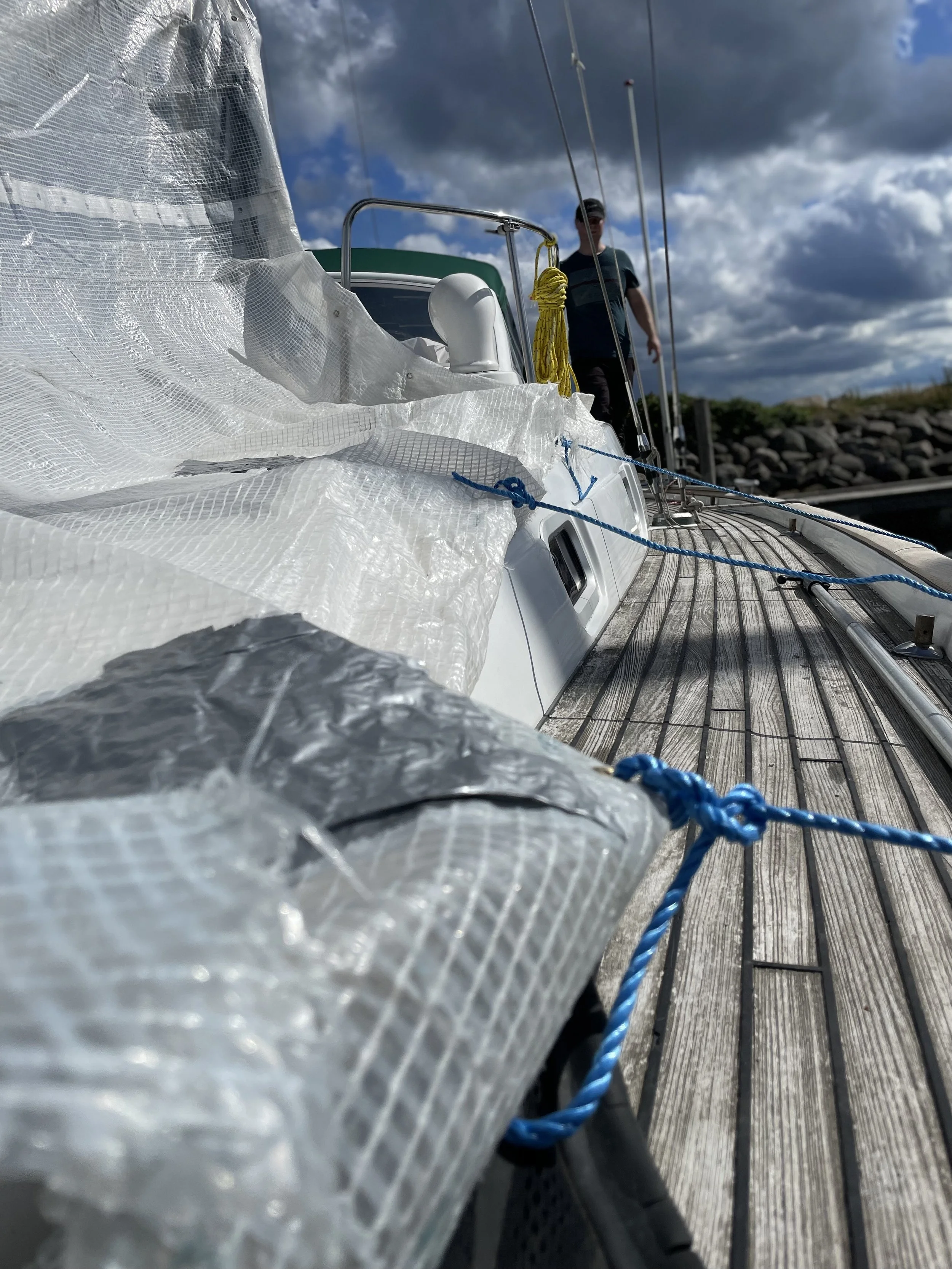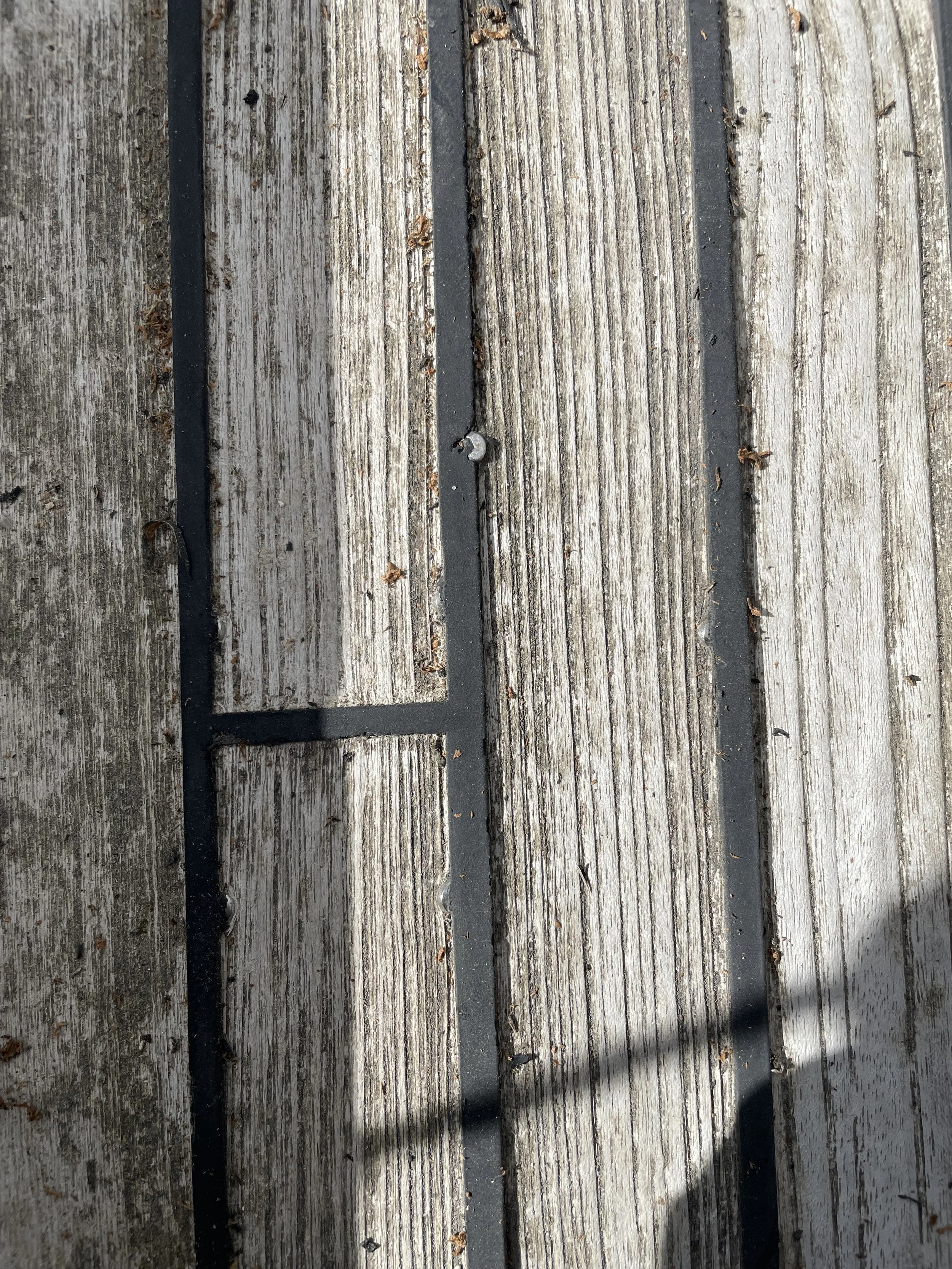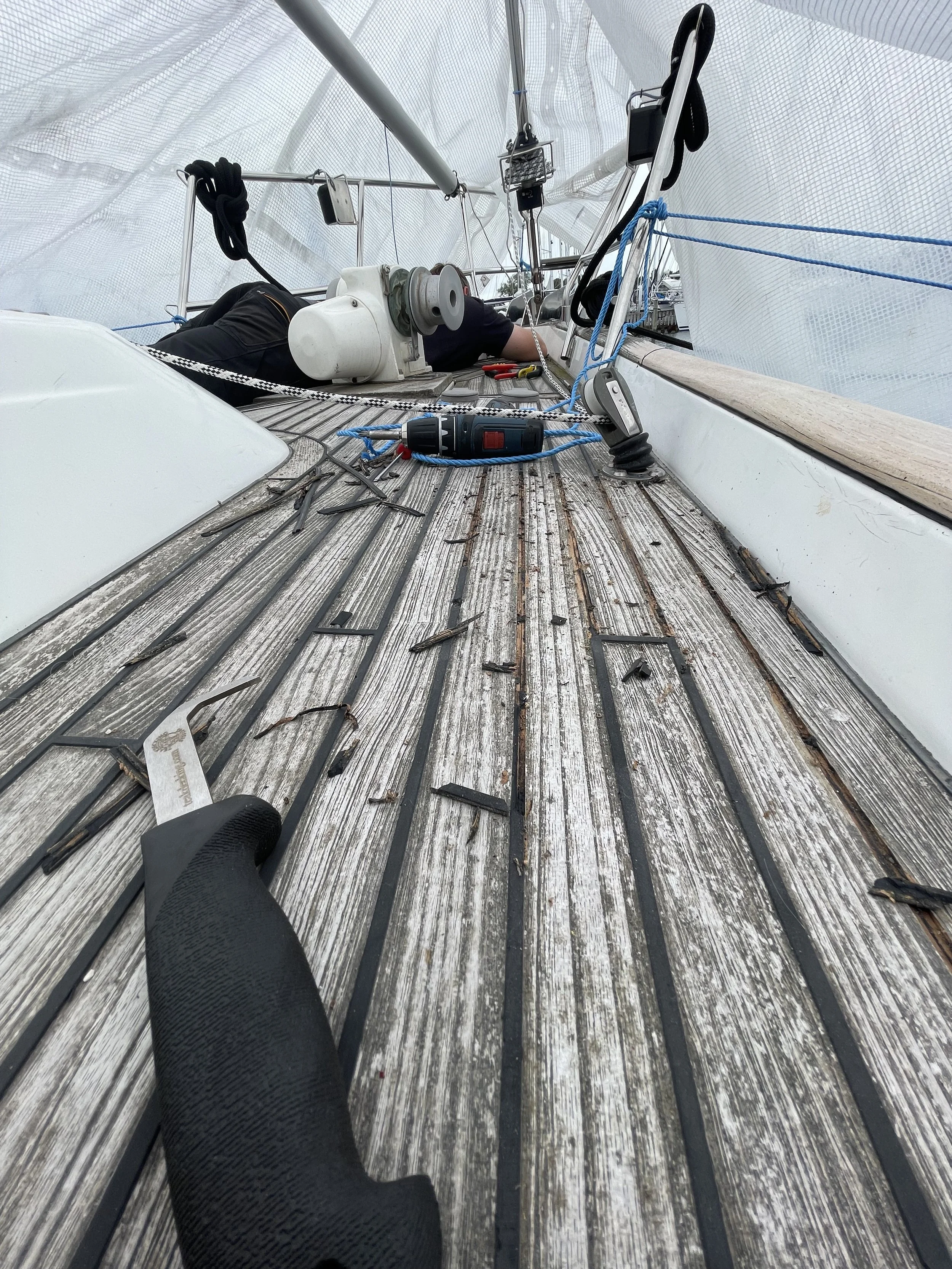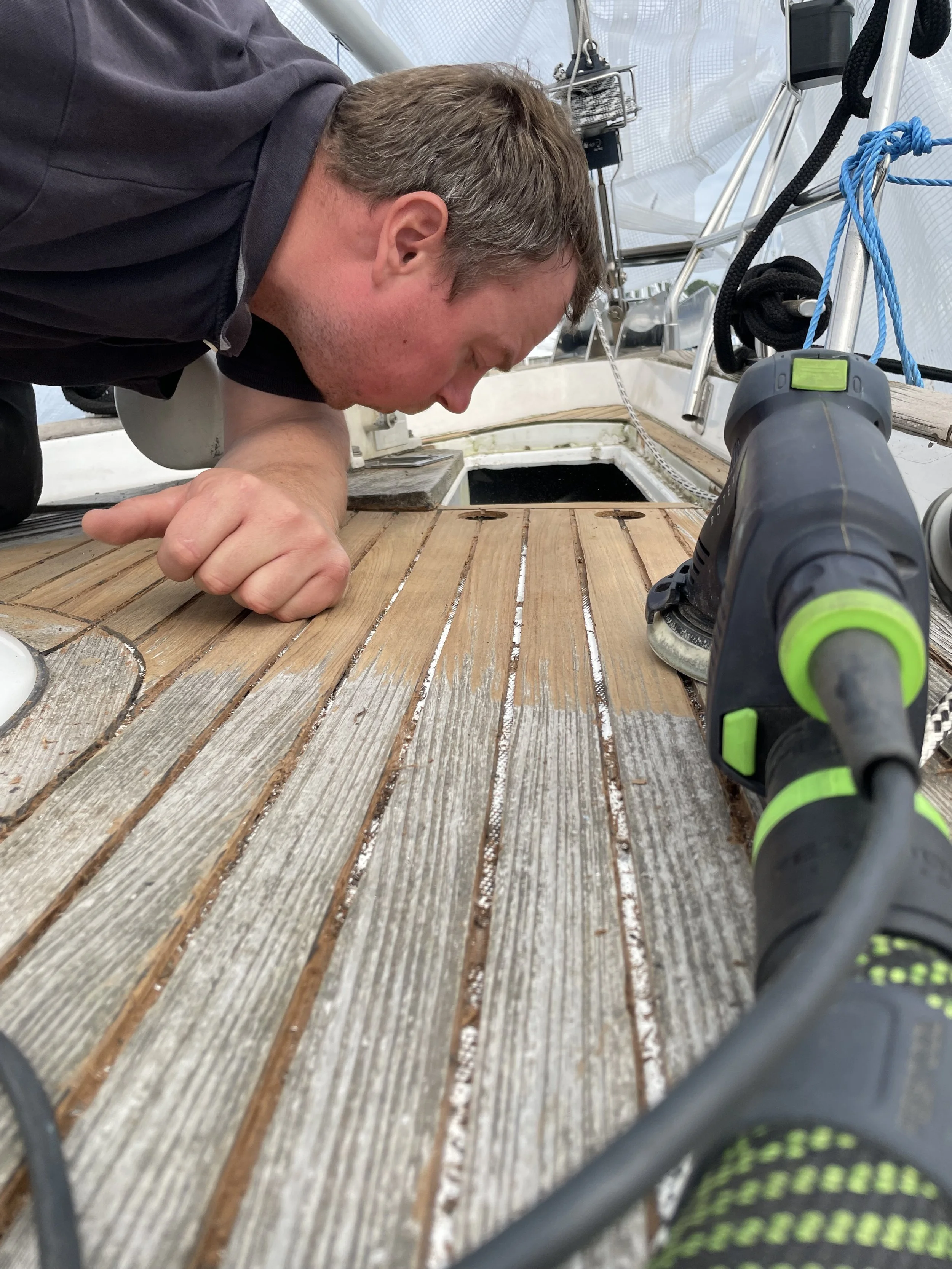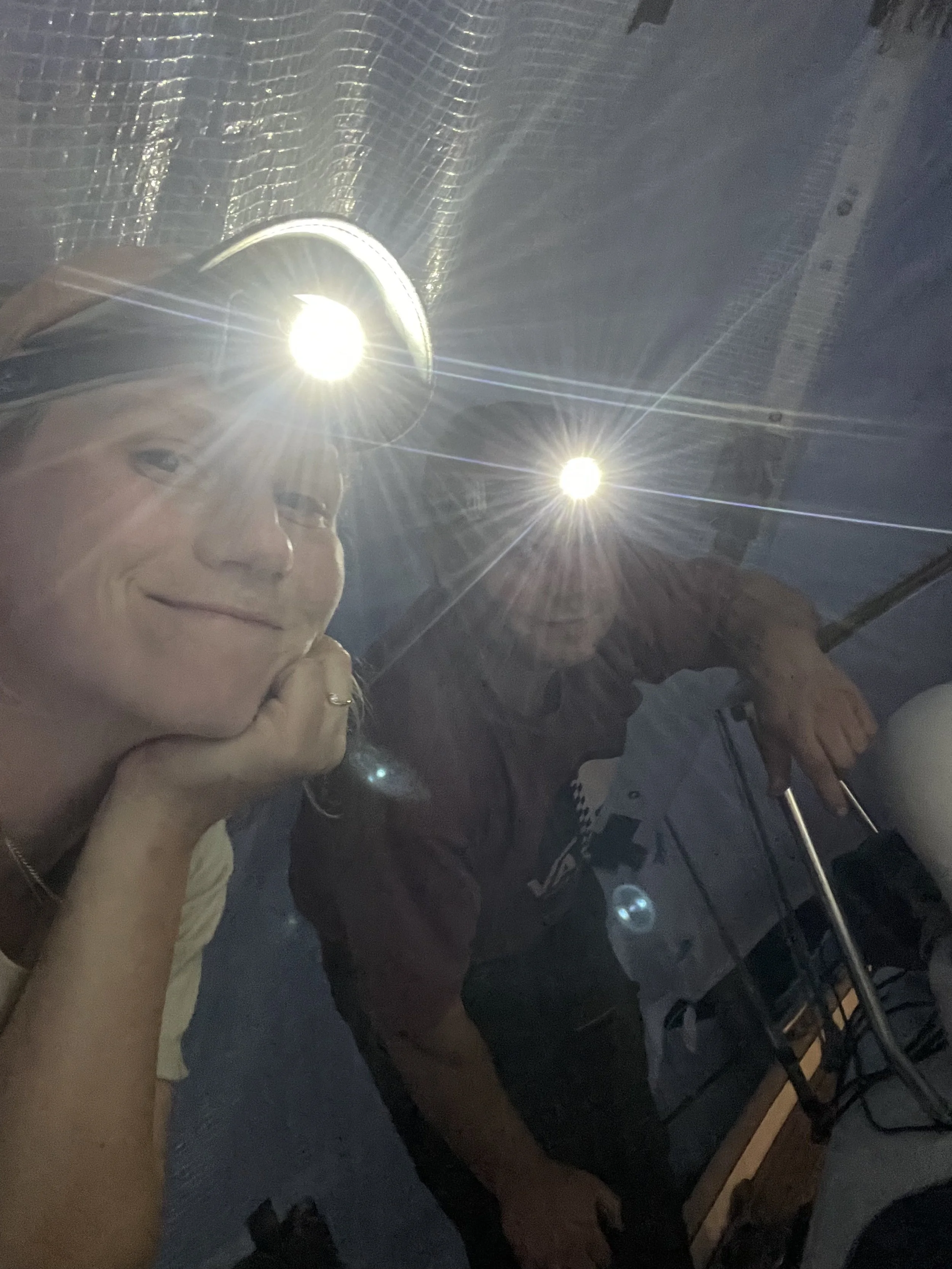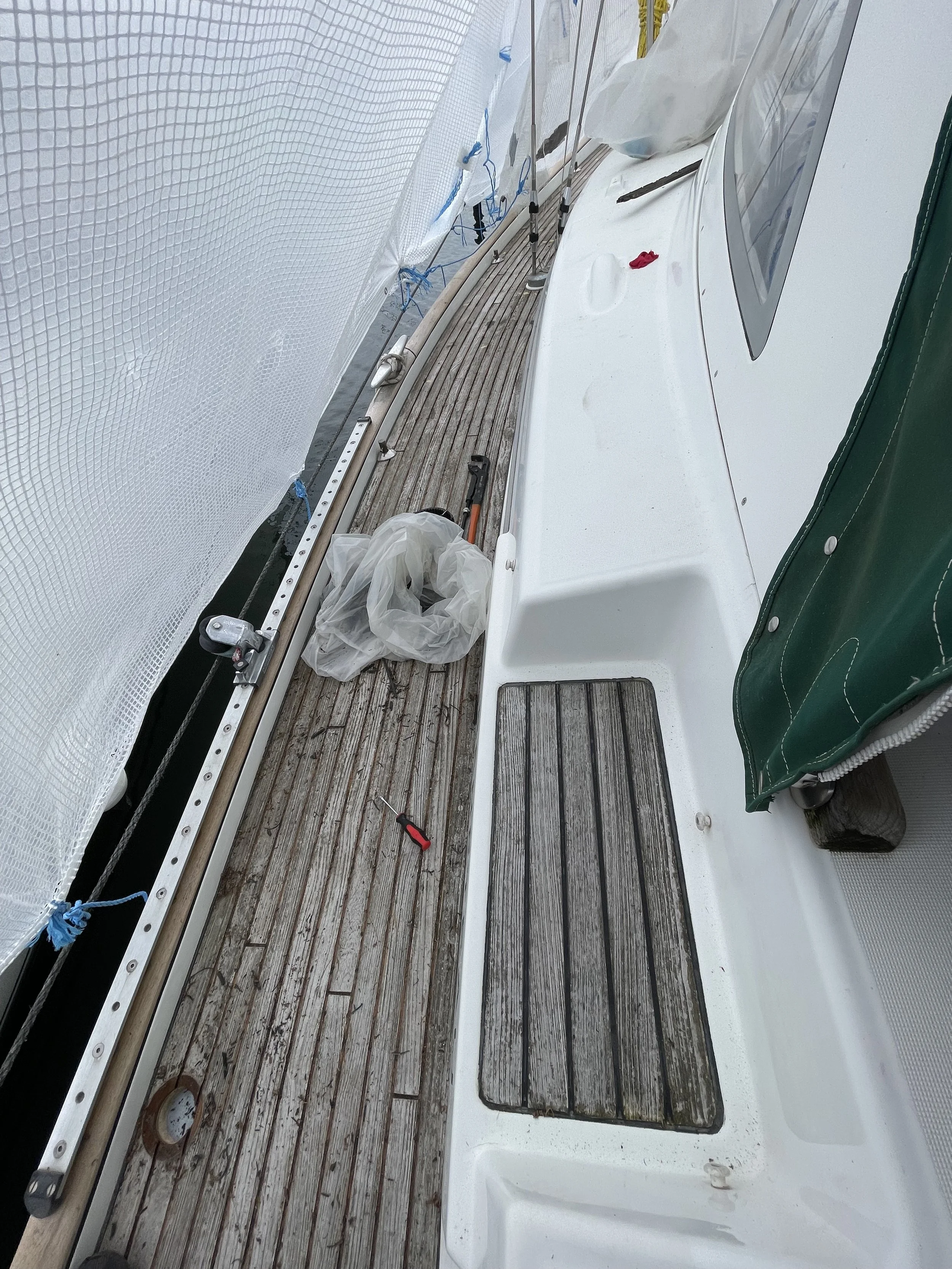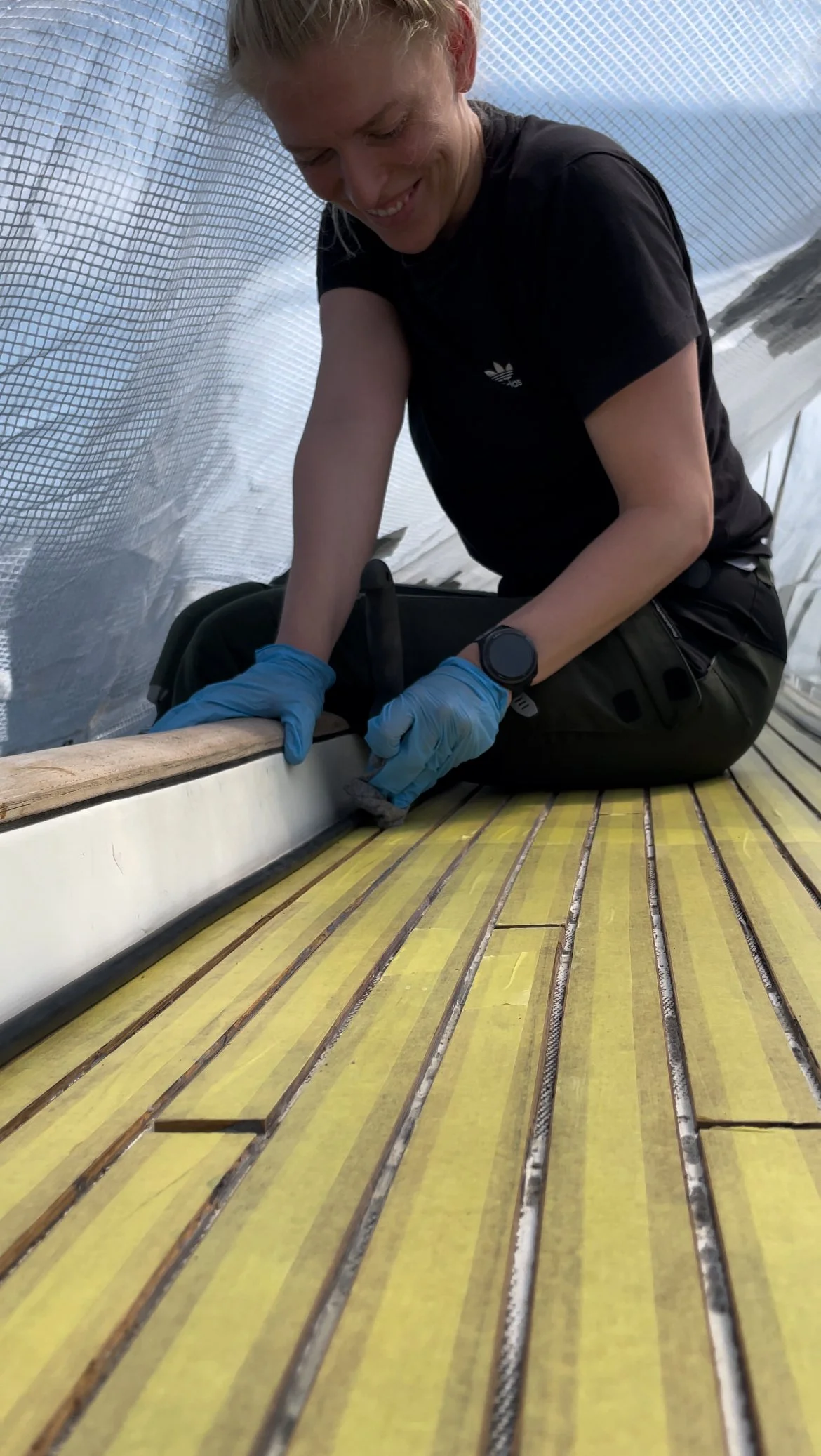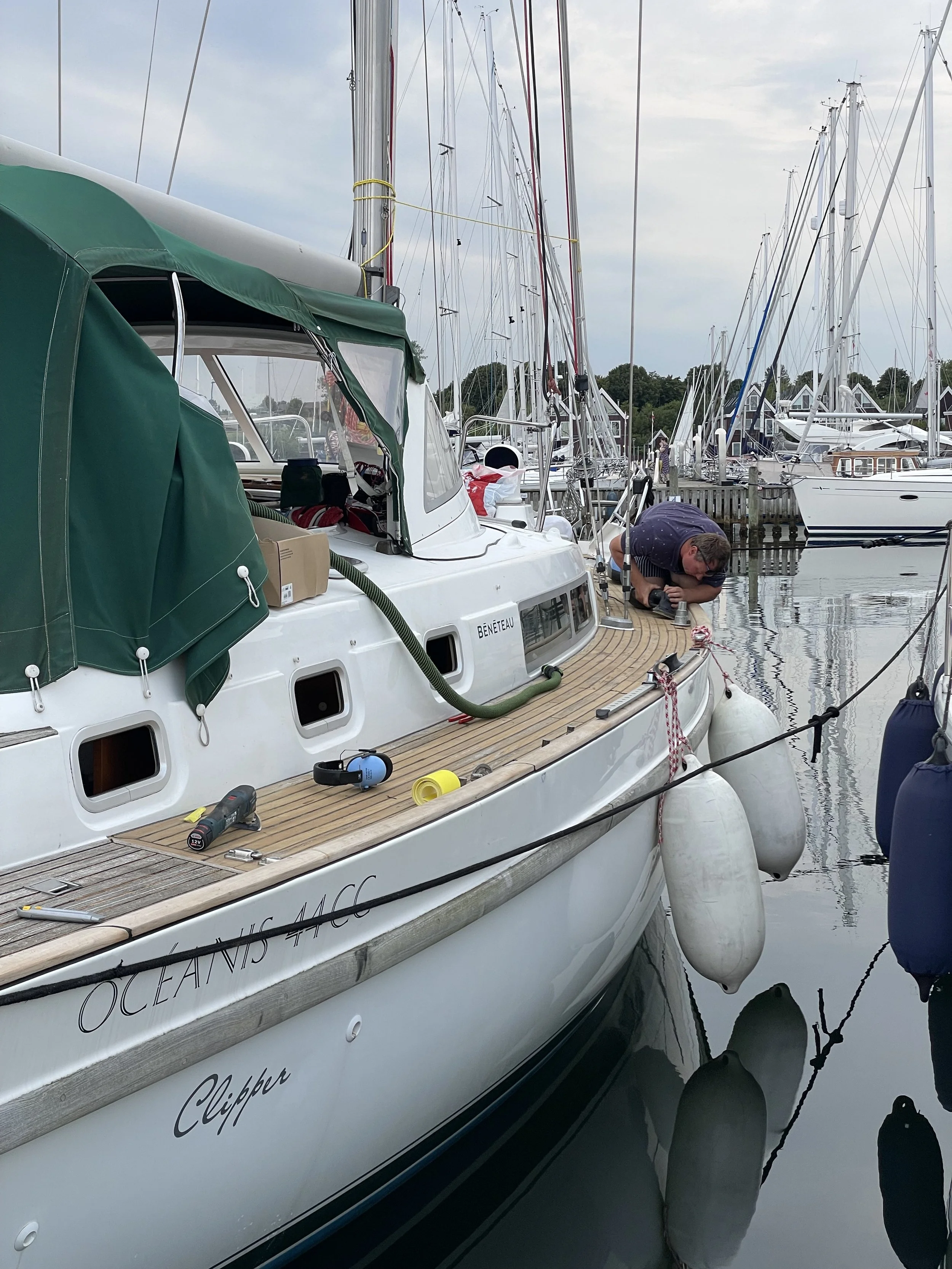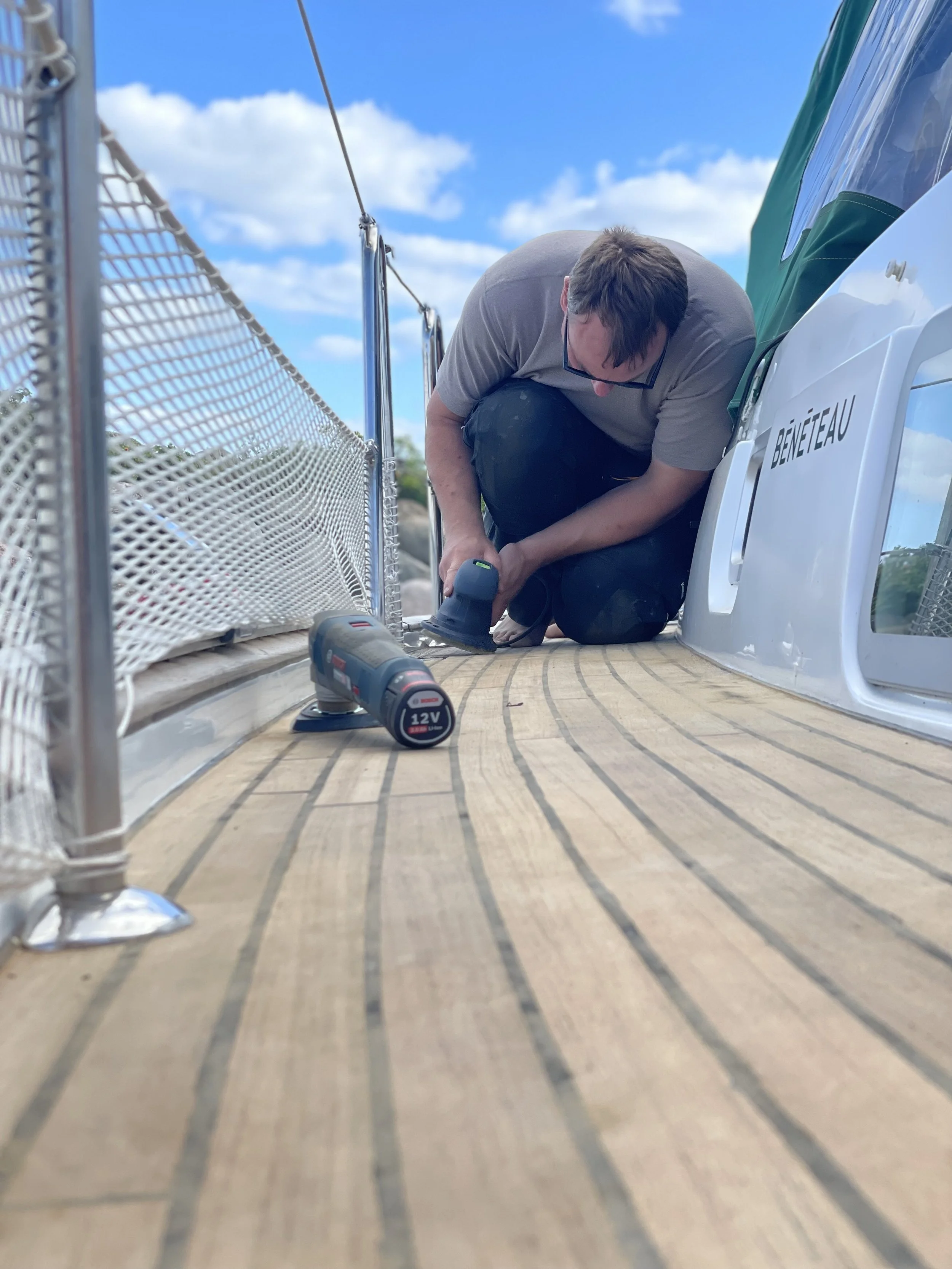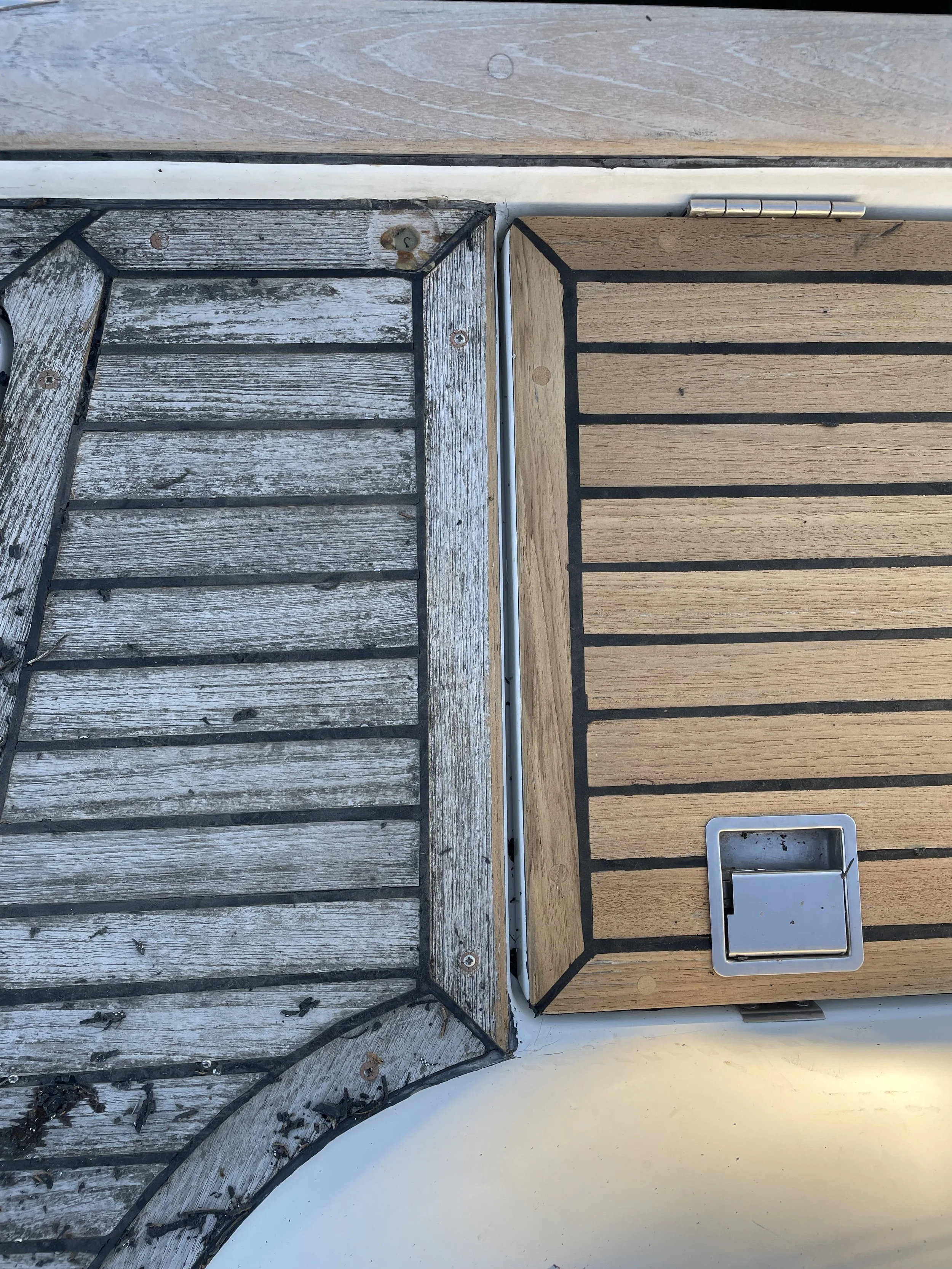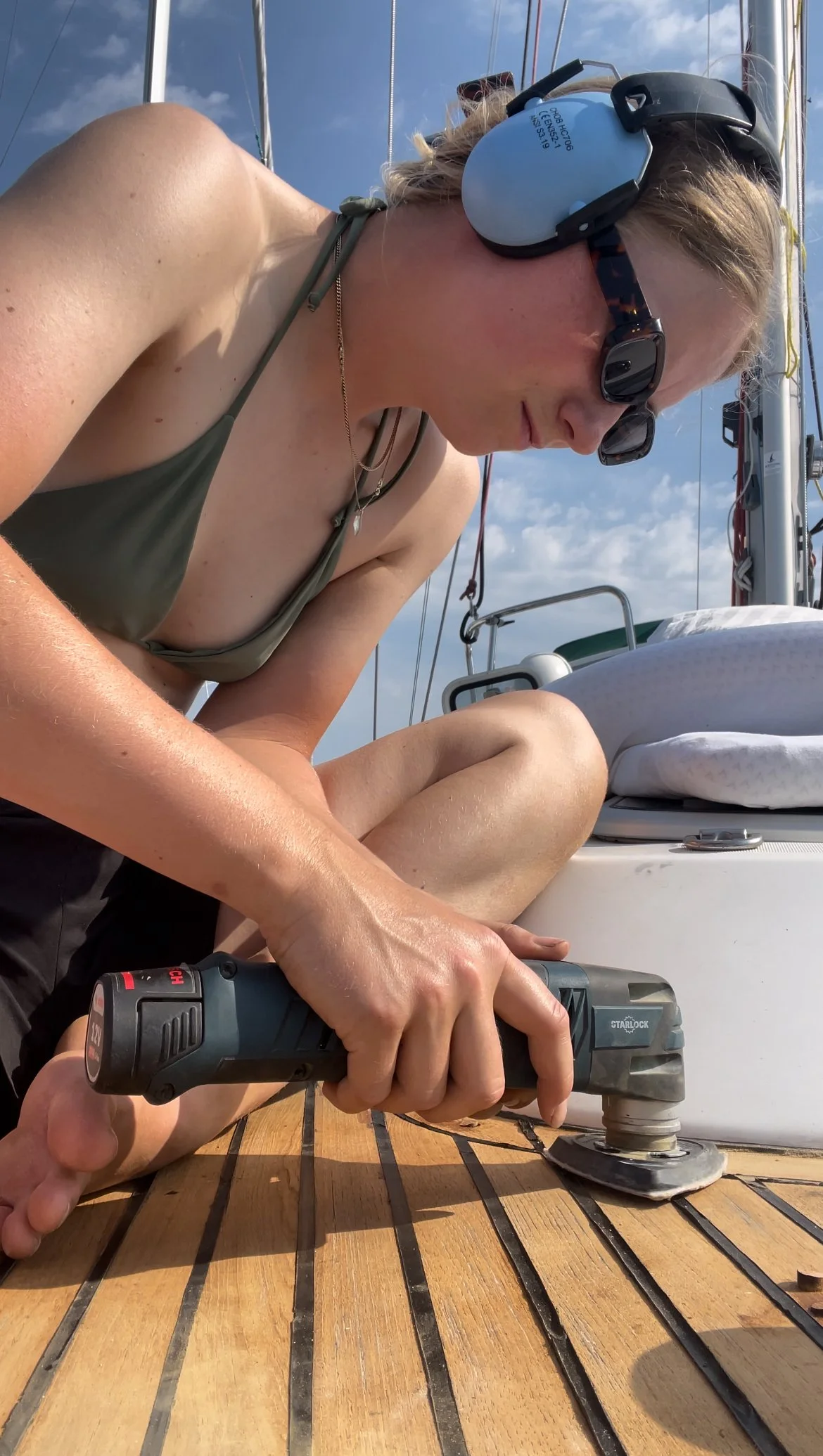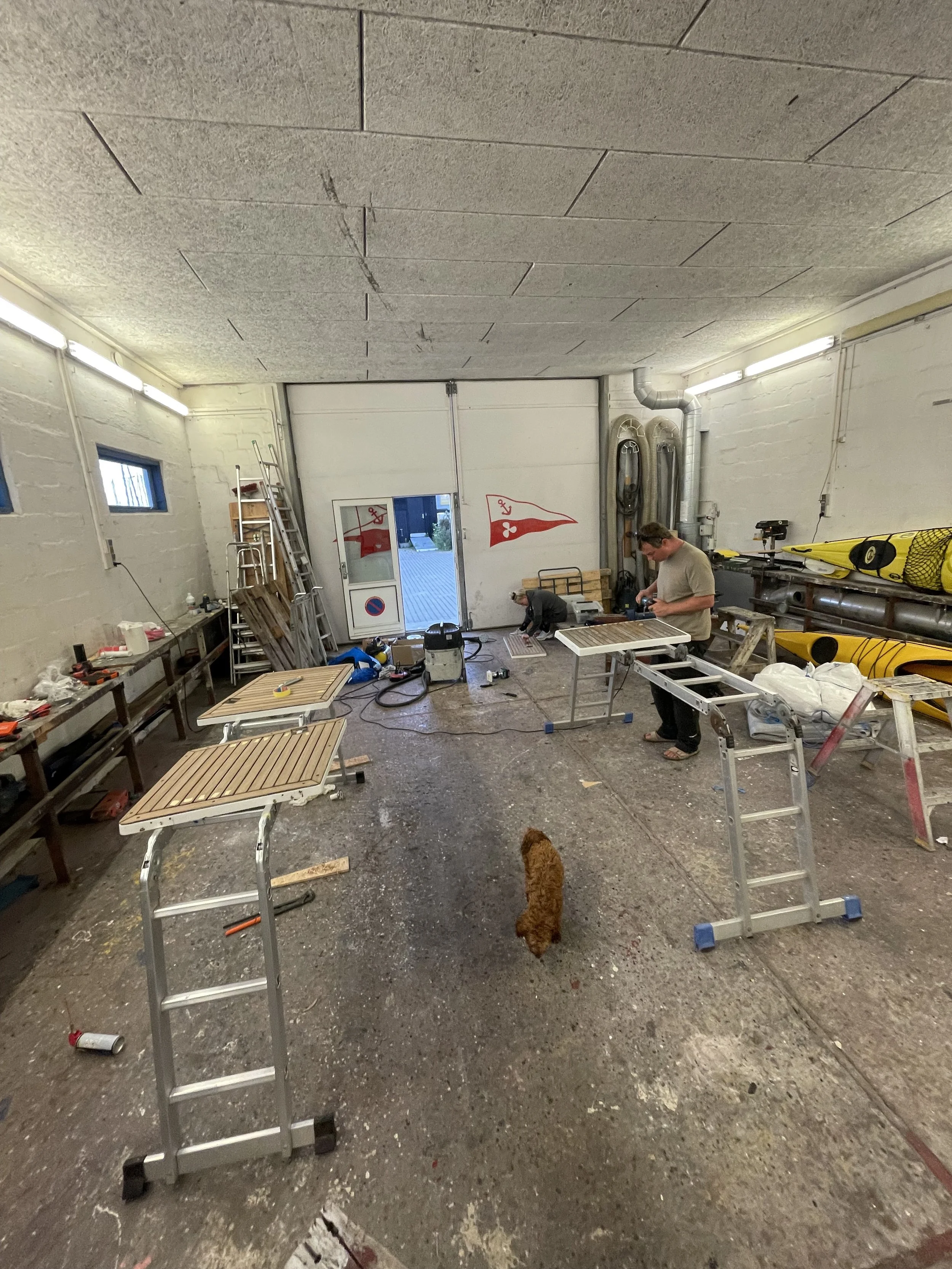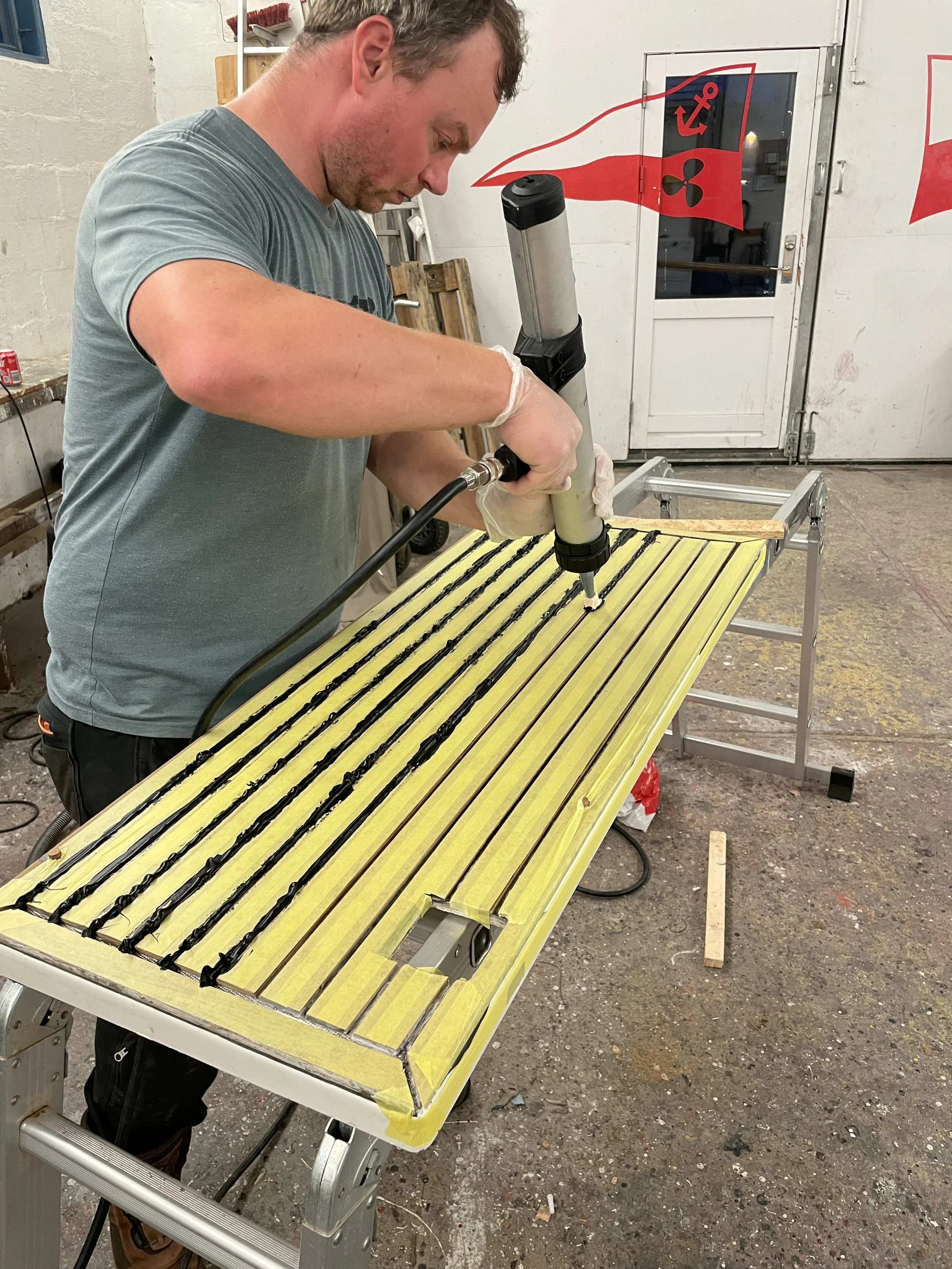Refitting pt. 3 - and all about our teakdeck
What did we accomplish during the summer of 2024?
Well, we definitely didn’t get out sailing—not even to test our new navigation equipment.
We knew it wouldn’t be a summer like the one we had the year before in Sweden. We knew Christian had work, and we had projects to finish before the summer was over.
We splashed Vela on May 8th and sailed to the new marina where we had secured a spot until our departure on June 1st 2025. That turned out to be our only sail in 2024.
When we arrived at the marina a few hours later, we noticed the bilge pump starting to run. While not unusual due to our still-leaky mast, we decided to check the bilge water just in case—and it tasted salty. Of course, we had inspected all the seacocks for leaks when Vela was launched, but upon closer examination, we discovered a small leak at a seacock in the engine room.
We debated for a while whether to haul the boat out immediately to fix it or wait until Vela was due to be hauled out during the upcoming winter. We tried a temporary fix using Tec7, which reduced the water ingress, but not enough for us to feel comfortable waiting.
Even so, it took about a month before we hauled Vela out again. This time, she was out of the water for only 24 hours, and we replaced the seacock in just two hours! Of course, we had to wait for the primer and bottom paint to dry, which took a bit longer, but we managed to get everything done before relaunching the next day.
By that point, we had replaced 16 seacocks, so we had become quite skilled at it!
When we removed the leaky seacock, we could see that it was most likely because we hadn’t cleaned it thoroughly enough, and the dirt had caused the leak. Now she’s watertight again, and no more saltwater is coming in!
However, at this point, we still had leaks around the mast—but we’ll get to that!
The biggest project we tackled this summer was our teak deck. Wow – what a job!
At first, we were on a tight schedule because Christian had to go to work, leaving us just two weeks to work on it. We decided to prioritize the side decks and foredeck, and leave the aft deck for when he returned. But fate had other plans – we actually managed to finish the whole thing! Christian’s work deadline got pushed just long enough for us to completely renovate the ENTIRE DECK!
We started by testing our skills on one hatch for a deck locker, where the teak strips had completely come loose in places. With a multi-cutter, we were able to get under the rest without damaging them, so we could reuse them.
Next, we sanded the old caulking all the way down to the gelcoat and cleaned it off. We glued the strips back down with Sikaflex 298fc – although, if we were to do it again, we’d probably use epoxy instead.
Sikaflex 298fc needs to be under constant, even pressure for about three days, and we didn’t exactly have perfect conditions for that. Some spots needed a bit more support, so in those places, we added a little epoxy.
A week later, we kicked off the big job! We had just one problem… the Danish summer. Rain came and went without warning, the forecast was useless, and we just had to get it done! We bought two reinforced tarps to shield us from the rain as much as possible. Then we spent an entire day cutting and prepping Vela to handle the unpredictable weather.
For three weeks, we worked an average of 12 hours a day, sanding, caulking, reinstalling fittings, and sealing every detail. The side decks, lockers, aft deck, and swim platform all got their turn, and by the end, the teak felt as soft as walking on a cloud ☁️.
It was hard work, but every step brought us closer to the moment we can finally lie on our “new” deck in the Mediterranean, with the sun on our faces and dolphins in the distance 🐬🌞.
We probably saved 400k DKK by DIY! Here is our procedure step by step:
1. Remove the old caulking. We use a special tool from @teakdeckingsystems - REEFING HOOK.
2. If your deck is both screwed and glued, consider removing the screws. We chose to remove the screws since they only created a possibility for water to enter the construction.
3. Fill out every screw hole with epoxy. During the renovation, we learned it would be a good idea to fill the holes with epoxy as soon as you remove the screws to ensure you seal every single hole.
4. Route between all the teak strips. We routed all the way to the gel coat to have as much wood to work with as possible. We used a fine cutter where the caulking was across the grain.
5. Seam sanding. It helps remove the remaining caulking and gives the teak a fresh bonding surface.
6. Masking the teak strips. We chose to mask the wood to reduce the sanding process later on because we knew the teak wasn’t very thick.
7. Cleaning off with acetone. This helps remove dust and gives the caulking the best conditions to adhere to the wood and cure.
8. Start caulking. We used an air compressor caulking gun. It makes the process easier for large surfaces that need caulking - we used SIS 440 from @teakdeckingsystems. We also used a 3D-printed applicator for the caulk head, which minimizes the amount of caulking used. I could only find it on @hfindustrimarineaps website.
9. “Spoon” caulk further into the seams. We used a flexible putty knife to smoothing the caulking.
10. Pull off the masking. While removing the tape, we used scissors to cut just before the area where it hadn’t been caulked yet.
11. Remove the top of the caulking. We used a sharp stanley knife. We did this to minimize sanding, just as we did with masking.
12. Sanding with grit 80. We used the fine cutter’s sanding head for all the edges and an orbital sander for the larger areas.
Side note: Sanding with grit 40. We believe the best way is to sand before routing to even out the wood.
Unfortunately, we had many places where the wood was so worn out that it wouldn’t have been possible to follow the old tracks with the router after sanding.

